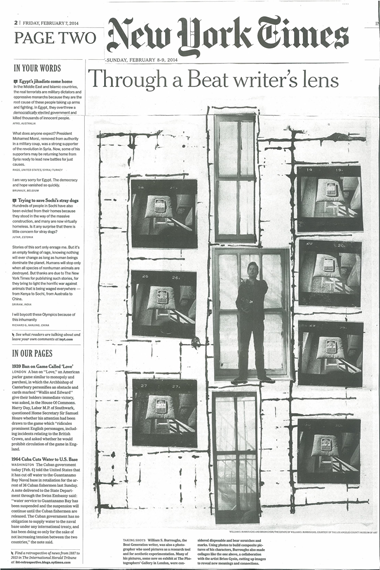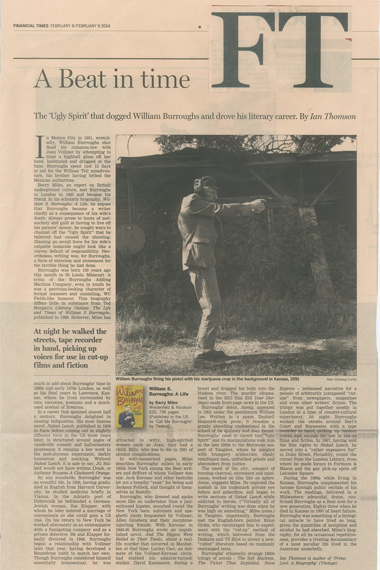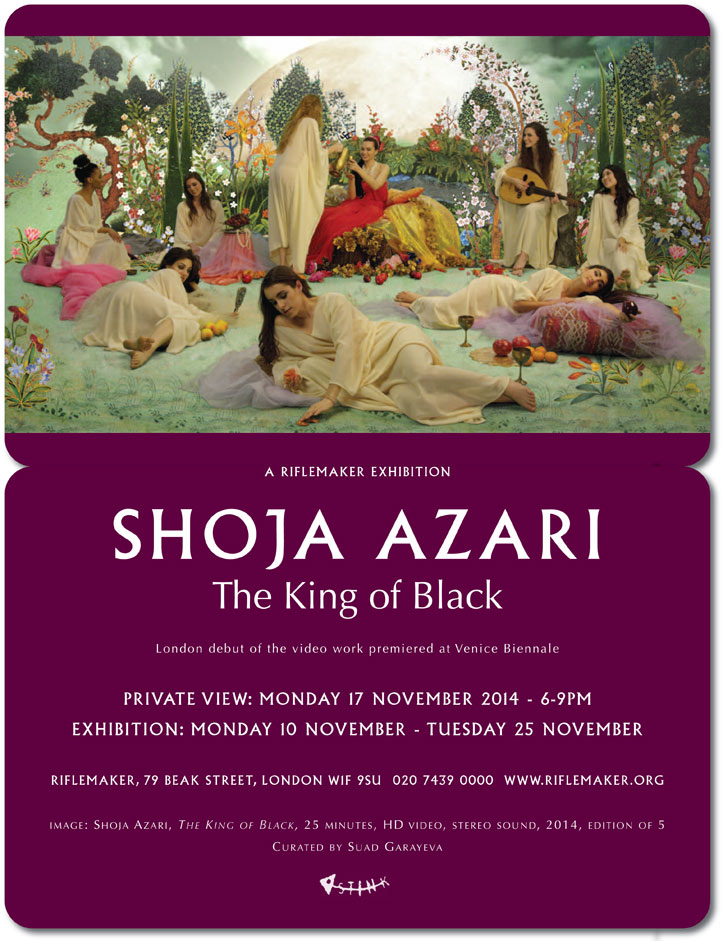
Click here for hi-res image
SHOJA AZARI (Iranian, b. 1958)
THE KING OF BLACK
HD colour video, 24 minutes, stereo sound (2013)
Shoja Azari is a visual artist/filmmaker who combines film with painting and photography. Since 1998, Azari and Shirin Neshat have developed a unique collaboration producing film and art installations together which have received international acclaim. Turbulent was the recipient of the Golden Lion at Venice in 1998. The work Women Without Men (2010), a feature written and directed with Neshat, was the winner of the Silver Lion at Venice. Based on the controversial novel by Shahrnoush Parsipour, the film interweaves the lives of four Iranian women during the summer of 1953 - a pivotal moment in Iranian history during an American led coup. Shoja Azari (b. 1958) lives and works in New York City.
Azari's short film merges live action filmmaking with miniature painting. 'The King of Black' is based on a 12th century illustrated poem, Haft Paykar (The Seven Beauties) completed by the Azerbaijani poet Nizami in 1197. In the tale, the king visits one of his seven brides, each residing in a different coloured dome on successive days of the week. The brides weave their own an elaborate stories of intrigue and morality, ultimately transforming the king into a 'just' ruler. Azari's film explores the allegory related by the Princess in the Black Dome, the one which emphasises the value of patience.
The king searches for the secret meaning behind a city's perpetual mourning and black dress. After one year of searching he is directed to a garden of paradise where he indulges in earthly pleasures for thirty days and thirty nights, yet is consistently denied the affections of the queen of the heavenly realm. Despite her council of endurance the king is impatient. Unable to endure the wait any longer he is returned to earth to forever lament the loss of utopia. Azari's film, and Nizami's poem, meditate on the notion of paradise and the patience required to achieve the promise of heaven.
In order to realise the complex relationship between paradise and patience, the film establishes a visual and ideological dialectic. The lush setting of the manipulated miniature paintings is realised in the presence of the austerely attired characters. The opulence of the visual narrative provides a counterpoint to the tale of patience and endurance. Within the film's theatrical tension is also a tale which is as relevant today as it was almost a millennium ago.
At the heart of the narrative is the treatise that that neither perfection nor paradise can be achieved so long as the individual is tied to the earthly delights of greed and lust. For the artist and the film, promises of earthly pleasures in heaven - which can both delude and manipulate - undermine the philosophical depth of one's triumph over desire and the patience and endurance required to reach such a point.
- adapted from the exhibition catalogue for 'LOVE ME, LOVE ME NOT', published by YARAT on the occasion of the collateral event of the 53rd Biennale de Venezia. Producer: YARAT, curator: Dina Nasser-Khadavi.
We are grateful to StinkDigital in London for their presentation and support of this project: www.stinkdigital.com
SHOJA AZARI
Banquette of Houries (from The King of Black) 2013
inkjet print ed. 5
30 x 41.5 in / 76 x 105 cm
Banquette of Houries (from The King of Black) 2013
inkjet print ed. 5
30 x 41.5 in / 76 x 105 cm
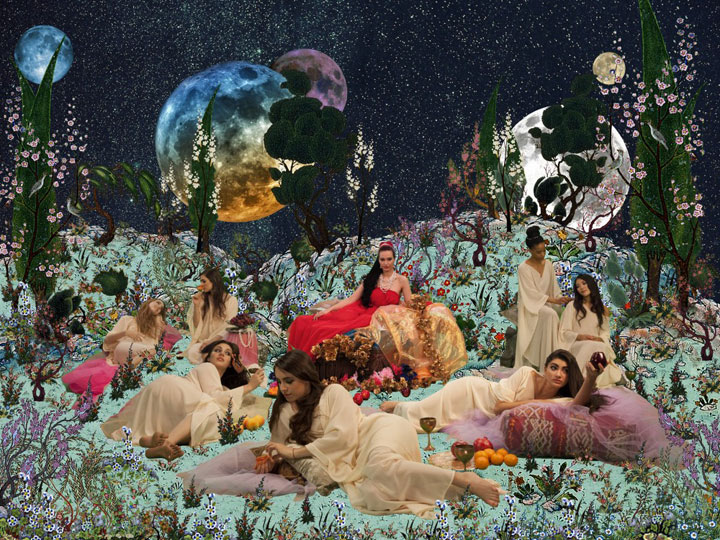
SHOJA AZARI
The Heavenly Bed (from The King of Black) 2013
inkjet print ed. 5
30 x 41.5 in / 76 x 105.41 cm
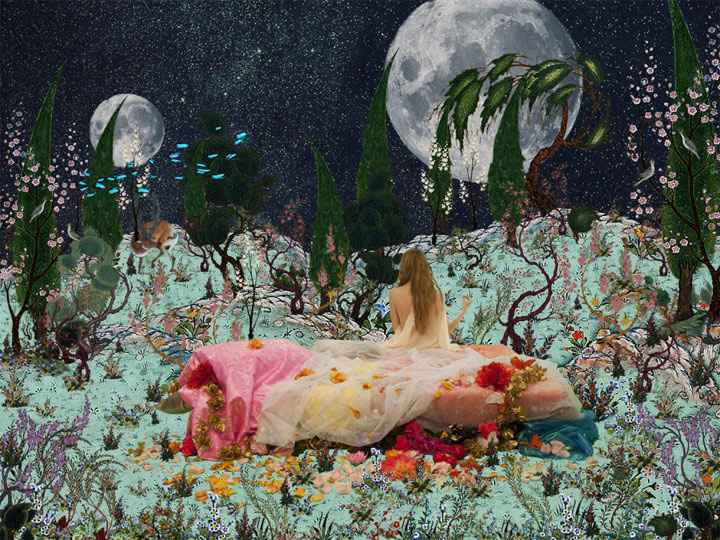
SHOJA AZARI
The Dance of Alema or The Ugly Hamza 2013
oil on canvas
58 x 40 in / 147.3 x 101 cm
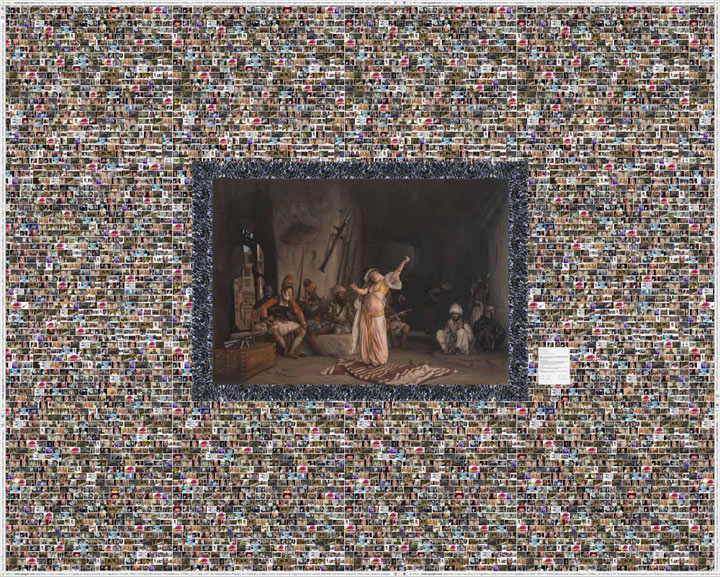
------------------------------------------------------------------------------------------------------------------------
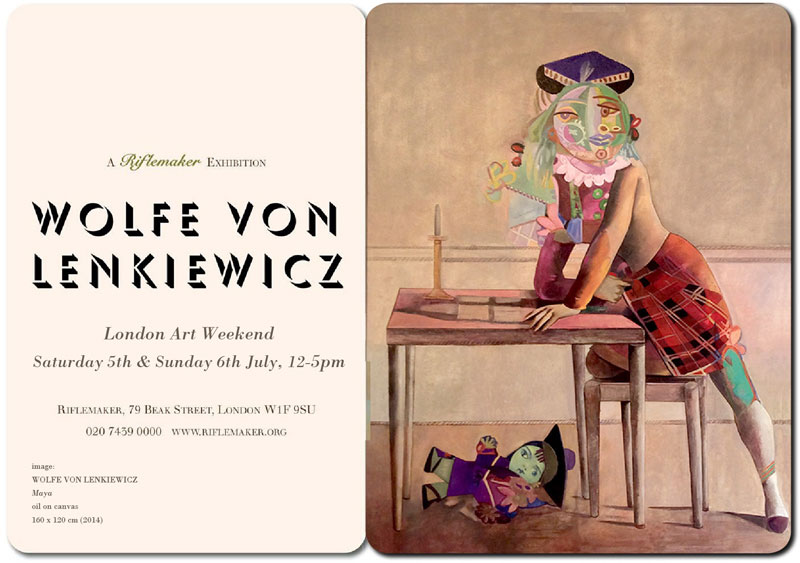
pdf book of works in the exhibition
Riflemaker is pleased to present the debut exhibition at the gallery by WOLFE von LENKIEWICZ
Private View: Tuesday 3rd June 2014
Opening Hours: Monday - Friday 11am - 7pm, Saturday 12 - 6pm
WOLFE von LENKIEWICZ
Wolfe von Lenkiewicz is a British-born artist of German-Polish-Jewish descent whose paintings use imagery from classical art as well as ideas from contemporary life. Born into a dynasty of painters, his great-grandfather was Baron von Schlossberg, court painter to King Ludwig II of Bavaria, his father was the British painter Robert Lenkiewicz.
Lenkiewicz (b.1966) graduated from the University of York with a degree in Philosophy, specialising in Contemporary Epistemology (the philosophical study of the nature, limits and grounds of knowledge) which has influenced and guided the conceptual side of his work as an artist. He is known for his immaculately rendered (re)mixing of familiar modes and idioms from art history, creating ambiguous compositions which question accepted critical thought and ideas. His work features in numerous international collections.
The artist's chief concern is our use of language and its re-interpretation with regard to the visual arts. Lenkiewicz's disruptions highlight our own complacency toward key components we have come to both accept and rely on. Our knowledge of various artist's 'stylistic signatures' has become so ingrained that we take them for granted. It is not until they are questioned that we realise how much confidence we place in them. Oscillating between painting, drawing and sculpture, the provocative nature of Lenkiewicz's work demonstrates the infinite possibilities which exist by combining and re-interpreting the images of our time.
In one painting at Riflemaker Lenkiewicz makes interventions into the story of Snow White framing the information inside Mondrian's familiar 'grid'. In another, a Picasso-esque late 1960's 'Le Roi'/'Cavalier', Lenkiewicz makes references to Picasso's contemporaries (Matisse, Rousseau) made by the artist throughout his career as well as Velasquez, Frans Hals, Rembrandt, Bateau Lavoir-era Cubism, double profiles and literary illustration (John Tenniel) - all contributing recognisable aesthetic to this new 'real thing'. In another series Lenkiewicz creates paintings by the great classical Masters; Chardin, Gericault, which may have once existed, according to various biographical sources, but were unfinished, abandoned or lost.
The history of art can be seen as a series of compromising developments from one movement or style to another. Lenkiewicz operates within the formal structures of drawing and painting. His flawless execution is imbued with a Humanist and Renaissance understanding of iconography, the difference in the freshly made 'masterwork' being the contemporary proposition of this new creation.
On this supposition, the artist considers the destruction of 'classical culture' under the influence of the trivialisation of the world. The works prove that 'subculture' grafts neatly onto even the most formal representation. This crossing of references leads to new hybrids. With his technical ability, the artist seduces and transfixes the viewer. His transcriptions are made with reverence, never mocking or parodying his subjects. Lenkiewicz gives taken-for-granted visual language a free ride into the modern world, liberating art-historical iconography from the shackles of history into a new universe of meaning.
image: 'DRINK ME' by Wolfe von Lenkiewicz, oil on canvas 210 x 160 cm (2013)
www.riflemaker.org
Riflemaker: 79, Beak Street, London W1F 9SU - 0207-439-0000 m: 07794-629-188
------------------------------------------------------------------------------------------------------------------------
Wolfe von Lenkiewicz is a British-born artist of German-Polish-Jewish descent whose paintings use imagery from classical art as well as ideas from contemporary life. Born into a dynasty of painters, his great-grandfather was Baron von Schlossberg, court painter to King Ludwig II of Bavaria, his father was the British painter Robert Lenkiewicz.
Lenkiewicz (b.1966) graduated from the University of York with a degree in Philosophy, specialising in Contemporary Epistemology (the philosophical study of the nature, limits and grounds of knowledge) which has influenced and guided the conceptual side of his work as an artist. He is known for his immaculately rendered (re)mixing of familiar modes and idioms from art history, creating ambiguous compositions which question accepted critical thought and ideas. His work features in numerous international collections.
The artist's chief concern is our use of language and its re-interpretation with regard to the visual arts. Lenkiewicz's disruptions highlight our own complacency toward key components we have come to both accept and rely on. Our knowledge of various artist's 'stylistic signatures' has become so ingrained that we take them for granted. It is not until they are questioned that we realise how much confidence we place in them. Oscillating between painting, drawing and sculpture, the provocative nature of Lenkiewicz's work demonstrates the infinite possibilities which exist by combining and re-interpreting the images of our time.
In one painting at Riflemaker Lenkiewicz makes interventions into the story of Snow White framing the information inside Mondrian's familiar 'grid'. In another, a Picasso-esque late 1960's 'Le Roi'/'Cavalier', Lenkiewicz makes references to Picasso's contemporaries (Matisse, Rousseau) made by the artist throughout his career as well as Velasquez, Frans Hals, Rembrandt, Bateau Lavoir-era Cubism, double profiles and literary illustration (John Tenniel) - all contributing recognisable aesthetic to this new 'real thing'. In another series Lenkiewicz creates paintings by the great classical Masters; Chardin, Gericault, which may have once existed, according to various biographical sources, but were unfinished, abandoned or lost.
The history of art can be seen as a series of compromising developments from one movement or style to another. Lenkiewicz operates within the formal structures of drawing and painting. His flawless execution is imbued with a Humanist and Renaissance understanding of iconography, the difference in the freshly made 'masterwork' being the contemporary proposition of this new creation.
On this supposition, the artist considers the destruction of 'classical culture' under the influence of the trivialisation of the world. The works prove that 'subculture' grafts neatly onto even the most formal representation. This crossing of references leads to new hybrids. With his technical ability, the artist seduces and transfixes the viewer. His transcriptions are made with reverence, never mocking or parodying his subjects. Lenkiewicz gives taken-for-granted visual language a free ride into the modern world, liberating art-historical iconography from the shackles of history into a new universe of meaning.
image: 'DRINK ME' by Wolfe von Lenkiewicz, oil on canvas 210 x 160 cm (2013)
www.riflemaker.org
Riflemaker: 79, Beak Street, London W1F 9SU - 0207-439-0000 m: 07794-629-188
------------------------------------------------------------------------------------------------------------------------
FRANCESCA LOWE
(BORN 1979) LONDONCURRICULUM VITAE
Francesca Lowe's new paintings, from the series titled 'Flush' have just been installed at
The House of St, Barnabas, 1, Greek Street, London W1D 4NQ 0207-437-1894
for opening hours: www.hosb.org.uk or call Riflemaker: 07794-629-188
FRANCESCA LOWE: 'Flower Paintings' (2014)
This new series of paintings by London-born Francesca Lowe developed through the artist thinking about the term "still life" - the words "still" and "life" and the polarity between them. The paintings explore ways to infect stillness with life and life with stillness.
Visually, a 'cut' bloom, a 'still' photograph, a floral 'motif' (quiet, truncated elements) and applied layers of pattern operating at different physical depths within each painting, create visual oscillations. Some aspects of the images and patterns are familiar (sampled from Op art, wallpaper, clip art, curtains; 'pop culture' references). This familiarity lends itself to the very idea of stillness, perhaps due to its relation to known-ness. The loop of 'known-ness' or 'what we are used to' disrupted, turned unfamiliar and then lost is what Lowe appears to be interested in depicting as it echoes the ebb and flow of "life" itself.
Riflemaker London - 07794-629-188 www.riflemaker.org
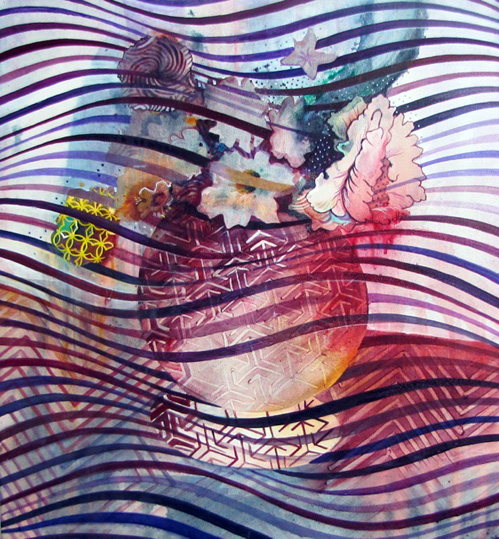
No. 1 oil on canvas, 71.5 x 56cm, 2013
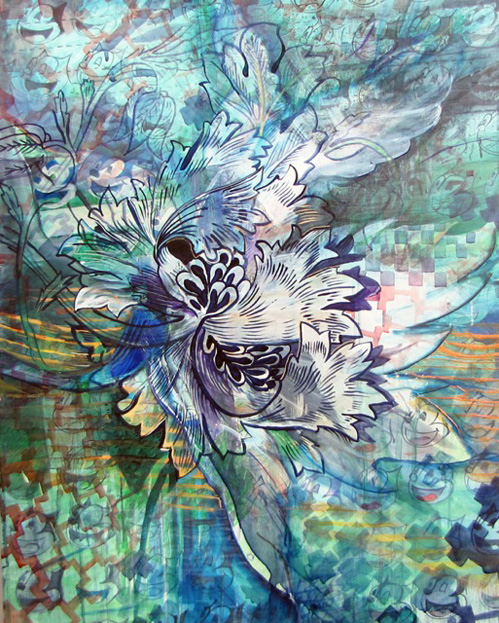
No. 2 oil on canvas, 61 x 48.5cm, 2013
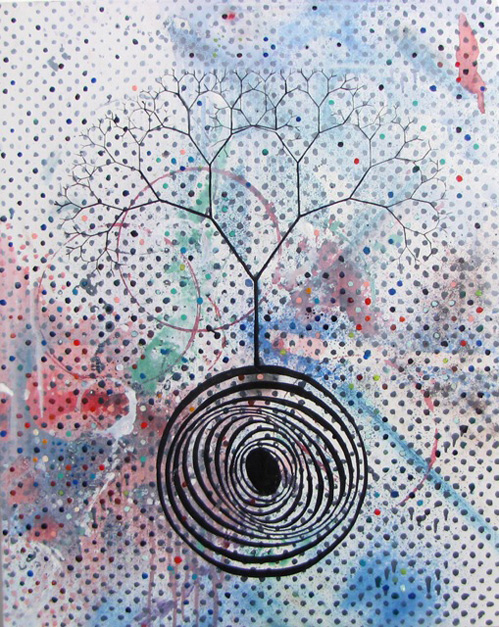
No. 3 oil on canvas, 61 x 48.5cm, 2013
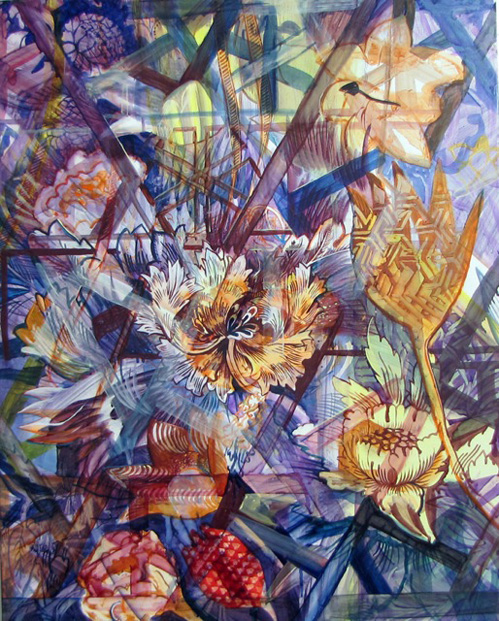
No. 4 oil on canvas, 61 x 48.5cm, 2013
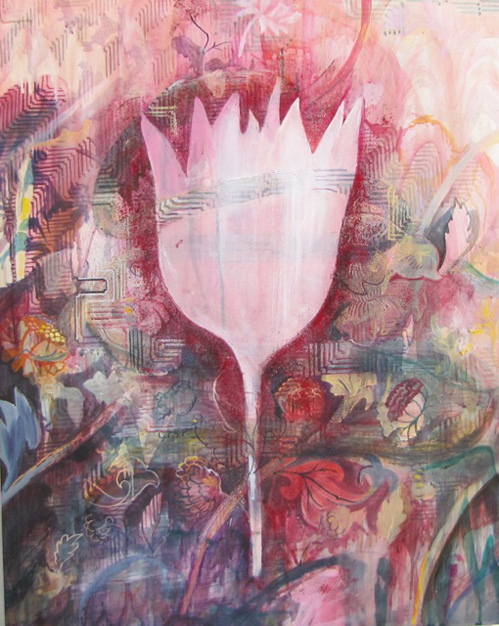
No. 5 oil on canvas, 61 x 48.5cm, 2013
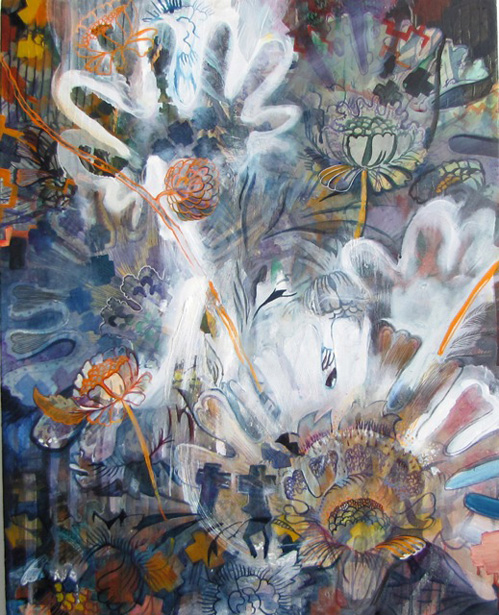
No. 6 oil on canvas, 61 x 48.5cm, 2013
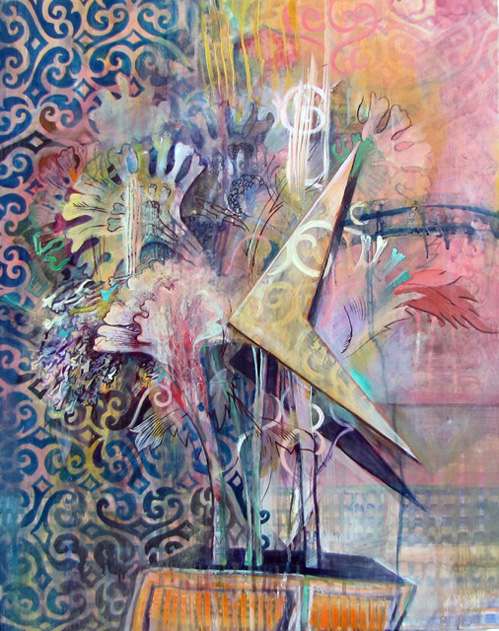
No. 7 oil on canvas, 61 x 48.5cm, 2013
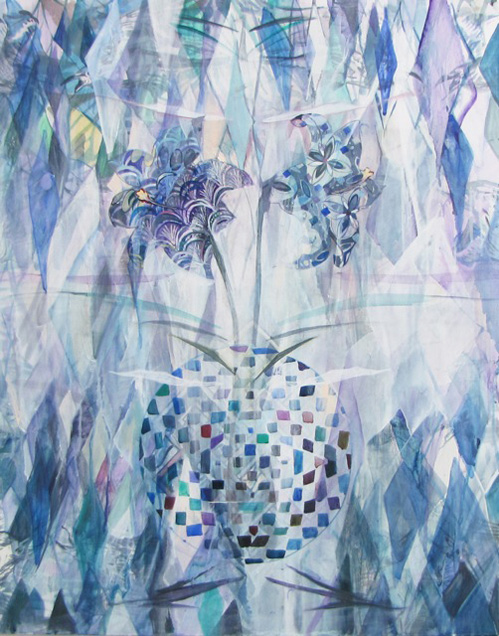
No. 8 oil on canvas, 61 x 48.5cm, 2013
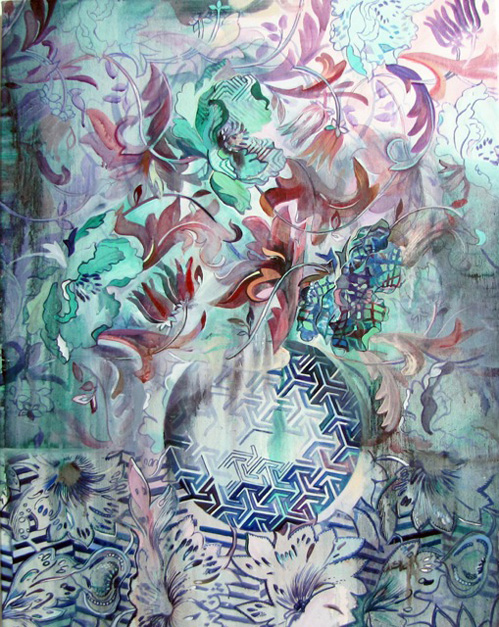
No. 9 oil on canvas, 61. 5 x 56cm, 2013
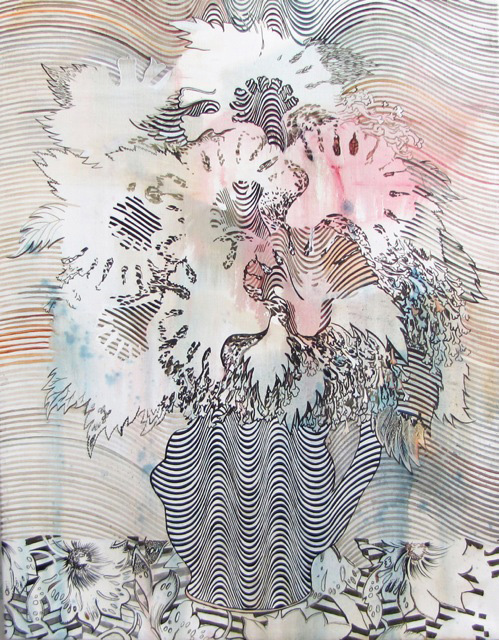
No. 10 oil on canvas, 71.5 x 56cm, 2013
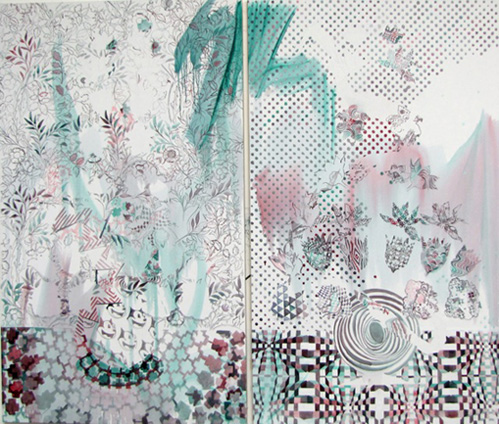
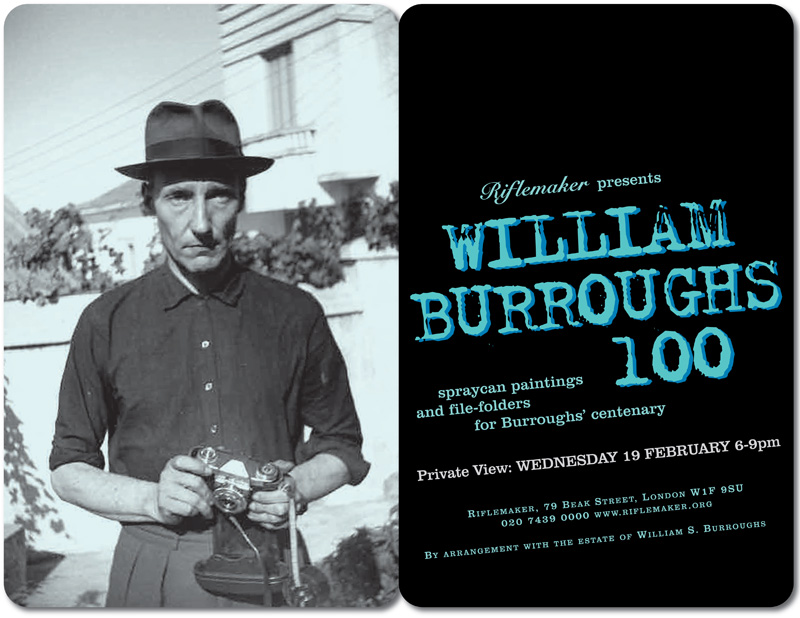
Private View: Wednesday 19 February 6-9pm - exhibition ends Saturday 29 March
The exhibitioe n celebrates what would have been the 100th birthday of the American novelist, short story writer, essayist, painter, sculptor and spoken word performer.
The works on show at Riflemaker will include his paintings on illustration boards and manila folders, 'stencil' drawings, wooden board sculptures and photography. Just five minutes walk from Riflemaker the exhibition 'Taking Shots' (Burroughs' little known photography work) has just opened at the Photographer's Gallery in Ramillies Street
(off Oxford Street) www.photographersgallery.com
for more: [email protected] 0207-439-0000 mob: 07794-629-188
----------------------------
William Seward Burroughs II (also known by his pen name William Lee; February 5, 1914 - August 2, 1997) was a primary figure of the Beat Generation and a major postmodernist author, he is considered to be "one of the most culturally influential, and innovative artists of the 20th century"
Burroughs' influence is considered to have affected a range of popular culture as well as literature. He published eighteen novels and novellas, six collections of short stories and four collections of essays. Five books have been published of his interviews and correspondences. He also collaborated on projects and recordings with numerous performers and musicians, and made many appearances in films.
Norman Mailer: "William Burroughs may be the only American writer who may be conceivably possessed by genius"
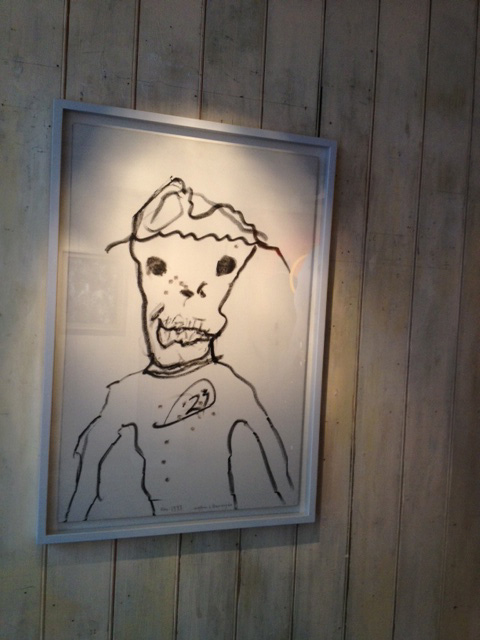
WILLIAM S. BURROUGHS
'Untitled' (23 Badge)
with 23 bullet holes
black felt marker on canvas (framed) (1993)
100 x 70 cm
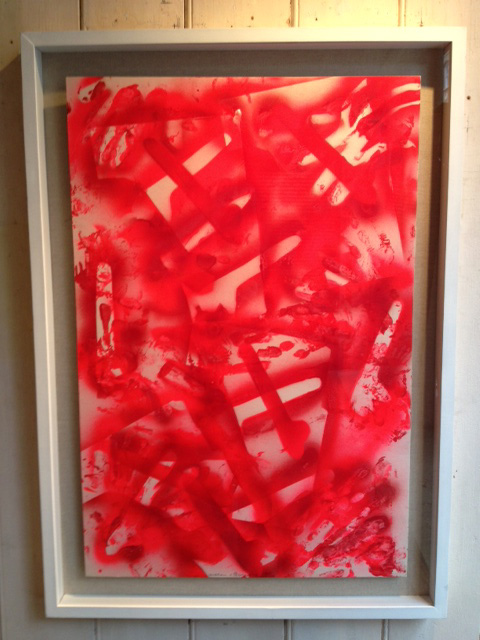
WILLIAM S. BURROUGHS
'Red Pricks'
fluorescent spraypaint and stencils
on illustration board (1989)
62 x 45 cm
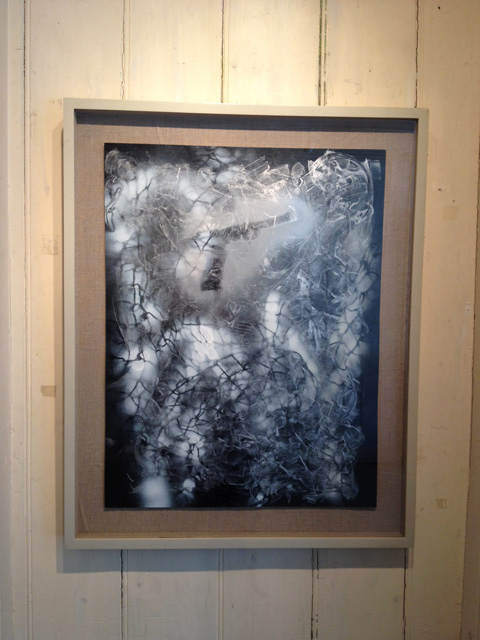
WILLIAM S. BURROUGHS
'Exhibit X'
Silver and white acrylic spraypaint
with gun and net stencils on card
58 x 44 cm, framed (1989)
WILLIAM BURROUGHS 100
is the latest display of William Burroughs' visual art at Riflemaker.The exhibitioe n celebrates what would have been the 100th birthday of the American novelist, short story writer, essayist, painter, sculptor and spoken word performer.
The works on show at Riflemaker will include his paintings on illustration boards and manila folders, 'stencil' drawings, wooden board sculptures and photography. Just five minutes walk from Riflemaker the exhibition 'Taking Shots' (Burroughs' little known photography work) has just opened at the Photographer's Gallery in Ramillies Street
(off Oxford Street) www.photographersgallery.com
for more: [email protected] 0207-439-0000 mob: 07794-629-188
----------------------------
William Seward Burroughs II (also known by his pen name William Lee; February 5, 1914 - August 2, 1997) was a primary figure of the Beat Generation and a major postmodernist author, he is considered to be "one of the most culturally influential, and innovative artists of the 20th century"
Burroughs' influence is considered to have affected a range of popular culture as well as literature. He published eighteen novels and novellas, six collections of short stories and four collections of essays. Five books have been published of his interviews and correspondences. He also collaborated on projects and recordings with numerous performers and musicians, and made many appearances in films.
Norman Mailer: "William Burroughs may be the only American writer who may be conceivably possessed by genius"

WILLIAM S. BURROUGHS
'Untitled' (23 Badge)
with 23 bullet holes
black felt marker on canvas (framed) (1993)
100 x 70 cm

WILLIAM S. BURROUGHS
'Red Pricks'
fluorescent spraypaint and stencils
on illustration board (1989)
62 x 45 cm

WILLIAM S. BURROUGHS
'Exhibit X'
Silver and white acrylic spraypaint
with gun and net stencils on card
58 x 44 cm, framed (1989)
